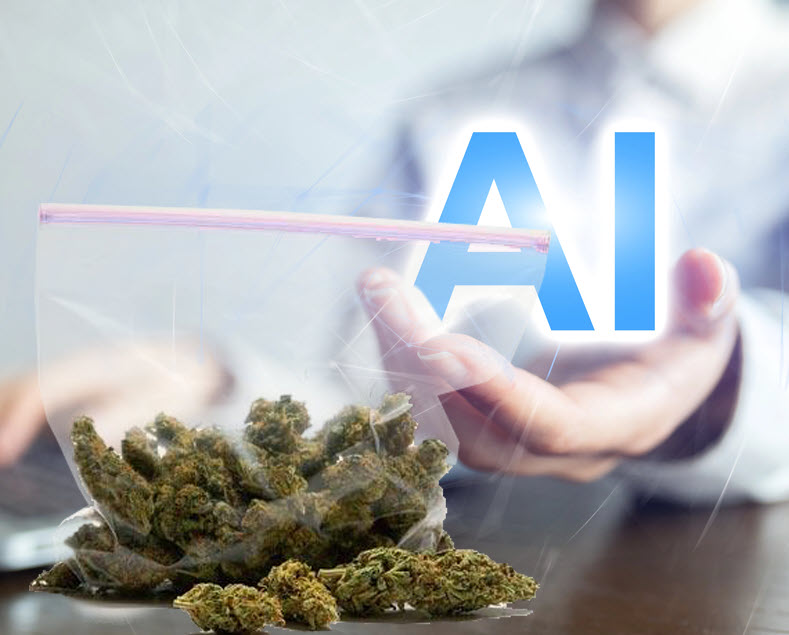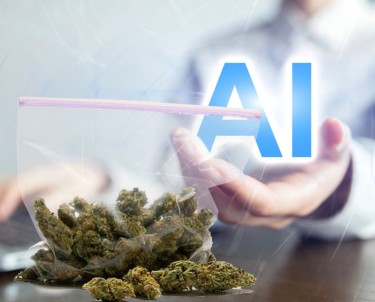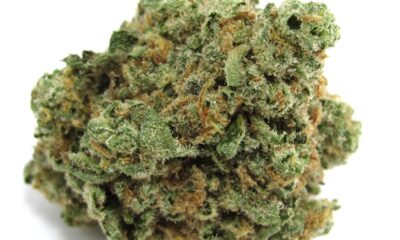Cannabis News
Cannabis Investment and the NBA
Published
2 years agoon
By
admin
In case you missed it, professional players on teams in the National Basketball Association are getting a free and clear opportunity to take advantage of the cannabis industry through cannabis investments. As a former D-1 college athlete, I’m glad to see the NBA not only remove cannabis from its list of banned substances but also allow its players to get some of the upside from this (still) burgeoning industry. At the beginning of this month, the long form collective bargaining agreement (the “Agreement”) between the National Basketball Players Association (“Players Association”) and the NBA went into effect, and it will last for seven years. Here’s a copy of that agreement. Among the 600 plus pages of the Agreement is the entree for players to finally be able to invest in the cannabis industry, which is a major boon for cannabis investments.
Cannabis investment and NBA players
Section 20 of the Agreement lays out the do’s and don’ts of cannabis investments for the players:
. . . a player may hold a direct or indirect ownership interest (whether controlling or non-controlling) in an entity that produces or sells CBD Products, provided that (A) such entity does not also produce or sell one or more products containing any Prohibited Substance or any other Schedule I or II substance under the Controlled Substances Act, and (B) such interest is held, and such entity operates, in compliance with all applicable laws and regulations.
The Agreement goes on to state that:
. . . a player may hold a direct or indirect ownership interest in a Marijuana Company, provided that: (A) Such interest is passive (i.e., includes no management, governance, voting, or executive role or other operational rights or roles); and (B) The player’s ownership interest is equal to less than a fifty percent (50%) beneficial interest in any class of securities (or other class of ownership interests) in such Marijuana Company (including via a partnership interest in a fund that owns an interest in such Marijuana Company); and (C) Such interest is held, and such entity operates, in compliance with all applicable laws and regulations . . . no player may hold any ownership interest (whether direct or indirect, including via a partnership interest in a fund) in an entity that produces or sells any products containing any Prohibited Substance or any other Schedule I or II substance under the Controlled Substances Act.
The fine print is mostly in the definitions
The Agreement defines key terms a follows:
- “CBD” means “hemp-derived compounds that have a concentration of tetrahydrocannabinol (‘THC’) at or below 0.3% and contain no other form or amount of cannabis.”
- “CBD Products” means “supplements and other products containing CBD as an ingredient (e.g., oils, creams, drinks, pills, powders, and roll-ons), but does not mean products that meet the definition of ‘Marijuana Products’ . . . or products containing any substance on the list of Prohibited Substances . . . or on Schedule I or II of the Controlled Substances Act.” Note that the list of “Prohibited Substances” is at Exhibit I-2 of the Agreement.
- “Marijuana Products” means “supplements and other products (e.g., flower, oils, creams, drinks, pills, powders, and roll-ons) containing (A) a non-CBD form of cannabis as an ingredient, and/or (B) a concentration of THC above 0.3%. . . any products containing both CBD and a non-CBD form of cannabis, and any products containing kratom, shall be Marijuana Products.”
- “Marijuana Company” means “an entity that (A) produces or sells one or more Marijuana Products, including an entity that produces or sells both CBD Products and one or more Marijuana Products, and/or (B) produces or sells CBD Products and has an affiliate that produces or sells one or more Marijuana Products under the same or a substantially similar brand as such entity or CBD Products.”
Translation for NBA players and cannabis investments
Players are free to directly or indirectly own or invest in companies that sell only CBD Products (and not, for example, cannabis, kratom, or psilocybin). Interestingly, via the list of example products in the Agreement — and since the NBA included drinks, pills, and powders — NBA players seemingly will be able to own and invest in CBD companies that violate the Food, Drug, and Cosmetic Act (given the FDA’s current position on CBD in food and beverage and regarding health claims). To be 100% safe from federal enforcement, NBA players would be wise to own and/or invest in CBD companies that make CBD topical products only (without making any health claims), but we all know that that likely won’t happen.
When it comes to state-licensed cannabis companies (i.e., companies that sell just “Marijuana Products” and/or “Marijuana Products” as well as “CBD Products”), players are more restricted in what they can and cannot do. Specifically, if a player directly or indirectly owns and/or invests in a state-licensed cannabis company, that interest cannot entitle the player to any “management, governance, voting, or executive role or other operational rights or roles”, and the player has to have a minority stake (i.e., less than 50%) in the venture or entity, whether it’s via direct ownership or through, for example, a fund. Of important note is the fact that if a CBD company also sells “Marijuana Products” (or, weirdly, kratom) or has an “affiliate” that sells Marijuana Products under the same or substantially similar brand as its CBD Products, that CBD company becomes a “Marijuana Company”, and the player’s ownership and investment options are limited.
Cannabis endorsement and promotions
Finally, the Agreement allows for the following:
. . . a player may participate in the promotion or endorsement of any brand, product, or service of an entity that produces or sells CBD Products, provided that such entity (A) is not a Marijuana Company, (B) does not also produce or sell one or more products containing any Prohibited Substance or any other Schedule I or II substance under the Controlled Substances Act, and (C) such participation and such entity’s operation comply with all applicable laws and regulations.
Without having to ask the Players Association and the NBA, players can promote and endorse any brand, product, service, or company that makes or sells CBD Products, but that’s it. They cannot do the same for any Marijuana Company (which is a massive bummer), and they’re still prohibited from any such promotion or endorsement even for a CBD company if that CBD company (or its affiliate) also sells Marijuana Products (or any product or substance that constitutes or contains a “Prohibited Substance” or a Schedule I or II controlled substance).
If a player wants to promote or endorse CBD Products sold by a Marijuana Company, they need a green light from both the NBA and the Players Association. This will be no small task. That player request to promote/endorse must be in writing; include a complete list of the products that the Marijuana Company produces or sells; include a complete list of all ingredients of such products; a description of the player’s proposed promotion or endorsement activity for the Marijuana Company’s CBD Products; and a detailed summary of the non-financial terms of any proposed promotion or endorsement agreement between the player and the Marijuana Company.
Unless a player’s request has been approved in writing by both the NBA and the Players Association, the player can’t promote any CBD Products sold by a Marijuana Company. And neither the NBA nor the Players Association will approve these if the subject CBD Products are “associated by the Marijuana Company with any Marijuana Product (e.g., the CBD Product is marketed or sold under a brand that also includes or refers to Marijuana Products) or if any proposed promotion creates a reasonable risk of public confusion with any Marijuana Product”. And, of course, these approvals can come with specific terms and conditions, too, from the NBA and/or the Players Association.
Bad cannabis investments
If players violate the Agreement when it comes to cannabis investments and/or promotions and endorsements, “without limiting other NBA rights or remedies, the player shall be required to promptly dispose of his ownership interest in the prohibited investment and/or immediately terminate his participation in the prohibited promotion or endorsement, as applicable.” The correction remedy here is swift and unforgiving, and penalties to the player could also apply (not to mention any collateral contract breach issues with the corresponding CBD and/or Marijuana companies).
What happens now?
We may see increased investment and ownership in the realm of CBD and cannabis when it comes to NBA players. It’s still not without risk of violating the Agreement, but it’s a pretty solid start to more participation in the cannabis industry by professional athletes. I’m hoping to see more IP licensing deals, direct investment, and joint ventures involving athletes, but that will obviously be after significant regulatory compliance exploration with both the Agreement and federal and state CBD and cannabis laws and rules.


Running Sober vs. High on Marijuana: How Weed Affects Your Workout
As the cultural and legal landscape surrounding cannabis continues to shift, many fitness enthusiasts are exploring its potential role in exercise routines. A growing number of runners are experimenting with cannabis use before workouts, sparking debates about its impact on physical performance. Does it enhance the experience or hinder results? This article delves into the science behind running sober versus running high, examining how cannabis affects endurance, focus, and overall workout performance.
The Basics of Running Sober
Running sober has long been the standard approach for athletes and fitness enthusiasts. Without external substances, runners rely on their natural physical and mental capacities to perform. This approach offers several benefits:
When running sober, the mind remains clear, allowing athletes to concentrate fully on their pace, breathing, and surroundings. This mental clarity can be crucial for maintaining proper form and achieving peak performance.
Sober running promotes a strong connection between the mind and body. Runners can accurately gauge their exertion levels, recognize signs of fatigue, and adjust their intensity accordingly.
Without the influence of substances, sober runners experience consistent physical responses to training. This consistency makes it easier to track progress, set realistic goals, and develop effective workout plans.
The Basics of Running High
Running high involves consuming cannabis before a workout, typically through smoking, vaping, or ingesting edibles. Advocates claim that cannabis can enhance the running experience in various ways:
Cannabis is known for its analgesic properties, which can help reduce muscle soreness and joint pain. Some runners report that cannabis allows them to push through discomfort and extend their workouts.
Cannabis can create a sense of euphoria or relaxation, often referred to as a “runner’s high.” For some, this altered perception makes running feel more enjoyable and less monotonous.
Cannabis may enhance the brain’s ability to enter a state of flow, where the runner feels deeply immersed in the activity. This can lead to creative thinking and a stronger connection to the running experience.
The Science of Cannabis and Exercise
To understand the effects of cannabis on running, it’s essential to examine its active compounds and how they interact with the body.
Cannabis contains two primary compounds that affect physical and mental states which are:
-
THC (tetrahydrocannabinol): The psychoactive component responsible for the “high.” THC alters perception, mood, and coordination.
The ratio of THC to CBD in a cannabis product significantly influences its effects on a workout. Products high in THC may impair coordination, while CBD-dominant options can provide relief from pain and inflammation without causing a high.
The body’s endocannabinoid system plays a crucial role in regulating mood, pain, and inflammation. Cannabis interacts with this system, potentially enhancing its natural functions. For instance, the endocannabinoids released during exercise are thought to contribute to the “runner’s high.”
Benefits of Running High
Proponents of running high argue that cannabis offers unique benefits that can enhance the workout experience:
Cannabis’s analgesic properties make it an attractive option for runners dealing with chronic pain or soreness. By reducing discomfort, it allows athletes to train longer and recover faster.
For some, running high turns a mundane workout into an enjoyable experience. The euphoric effects of THC can make runners feel more motivated and engaged.
Cannabis’s calming effects can help reduce pre-run anxiety, particularly for individuals preparing for races or long-distance runs. This relaxation can improve performance by preventing tension and overexertion.
Should You Try Running High?
If you’re considering running high, it’s essential to approach it with caution. Start with a low dose of cannabis in a safe and familiar environment. Pay attention to how your body responds and avoid using cannabis before races or high-stakes training sessions.
Risks and Drawbacks of Running High
Despite its potential benefits, running high comes with significant risks that runners should consider:
THC can impair motor skills and reaction times, increasing the likelihood of injuries or accidents during a run. This is especially dangerous for outdoor runners navigating traffic or uneven terrain.
Cannabis may distort a runner’s perception of effort, leading them to overexert or underestimate their limits. This can result in fatigue, dehydration, or even injury.
Smoking or vaping cannabis before running can irritate the lungs and reduce oxygen intake, negatively affecting endurance and performance.
In regions where cannabis use is prohibited, running high may carry legal consequences. Additionally, athletes competing in regulated events risk disqualification if cannabis use violates anti-doping rules.
Comparing the Two (Running sober vs high)
Performance: Running sober often leads to more predictable performance, as cannabis can either enhance or hinder depending on tolerance and strain.
Safety: While weed may reduce pain, it can impair judgment, making it harder to gauge limits or react to sudden changes in the environment.
Mental State: Some runners find that cannabis helps them relax and overcome pre-run anxiety, while others feel it clouds their mental clarity.
Conclusion
The decision to run sober or high is deeply personal and depends on individual preferences, goals, and circumstances. Running sober offers consistency, clarity, and safety, making it ideal for competitive athletes and those focused on measurable progress. On the other hand, running high can enhance enjoyment, reduce pain, and provide a unique mental experience, making it appealing for recreational runners.
Ultimately, the key is to approach cannabis use thoughtfully and responsibly. Whether you choose to lace up your running shoes sober or high, prioritizing safety and listening to your body will help ensure a rewarding workout experience.
RUNNERS AND MARIJUANA, READ ON…
HOW DOES A RUNNER’S HIGH REALLY WORK? CLICK HERE!
Cannabis News
Two Economic Forces That are Reshaping America
Published
2 days agoon
January 8, 2025By
admin

Two Sectors of Society that’s Not Going Away…
You know that feeling when you’re comfortably high and suddenly have an epiphany about how rapidly the world is changing? Well, that’s exactly what happened to me recently while scrolling through Reddit, watching two separate conversations unfold about AI and cannabis – perhaps the two most transformative forces reshaping our society today.
The pace of change is dizzying, isn’t it? We’re living in an era where technological advancement isn’t just rapid – it’s exponential. Before we can fully grasp one innovation, three more have already emerged. And while some folks are still debating whether to embrace these changes, the train has not only left the station, it’s broken the sound barrier.
I found myself in the middle of a heated debate about AI in publishing, with some traditionally-minded writers clutching their pearls at the mere mention of using artificial intelligence in the creative process. The irony wasn’t lost on me – here they were, arguing on a digital platform about the evils of digital progress. Meanwhile, in another corner of Reddit, I stumbled upon a discussion about cannabis stocks, with one astute observer noting, “Cannabis ain’t going anywhere…”
And you know what? Both these threads got me thinking. These two sectors – AI and cannabis – share something fascinating in common: they’re both unstoppable forces that are fundamentally altering how we live, think, and interact with the world. Whether you’re excited about it or terrified, both are here to stay. The only real question is how we choose to integrate them into our society.
So pack a bowl, fire up your neural networks (both biological and artificial), and join me as we explore these transformative forces reshaping our world. Trust me, this is going to be one hell of a trip through the intersection of technology, consciousness, and social change.
Let me tell you something about revolution – it doesn’t always come with a bang. Sometimes it creeps in slowly, one dispensary at a time, one changed mind at a time, until suddenly you look around and realize the world isn’t what it used to be. That’s exactly what’s happened with cannabis over the past two decades.
Remember when California was the lone wolf with its medical marijuana program? These days, you can walk into a dispensary in more than half of U.S. states and legally purchase cannabis. Hell, you can even light up legally in Germany now. The transformation has been nothing short of remarkable, even if 2024 saw a slight slowdown in the legalization momentum. But make no mistake – this train isn’t stopping. It might hit some speed bumps, but it’s still chugging along toward full legalization.
Now, I know what you’re thinking: “But Reg, what about the upcoming Trump administration? Won’t that put the brakes on everything?” Look, I’ve spent enough time analyzing cannabis policy to know that nothing’s certain in politics. But here’s the interesting part – there’s actually some reason for optimism. With RFK Jr. potentially heading up Health and Human Services, we might see some surprising moves. I’ve written before about how a well-crafted legalization plan could actually be a winner with a Republican-controlled government. Tax revenue, states’ rights, personal freedom – these are concepts that resonate across party lines.
But let’s be real for a minute. Whether it happens under Trump or the next administration or the one after that, cannabis legalization is inevitable. You can’t put this genie back in the bottle. We’re talking about an industry generating billions in legal revenue annually. The cannabis sector isn’t just some hippie dream anymore – it’s a serious economic force with real jobs, real tax revenue, and real political clout.
And here’s the kicker – demographics are destiny. The reefer madness generation is fading away, replaced by millennials and Gen X parents who’d rather spark a joint than open a bottle of wine after putting the kids to bed. Cannabis has been normalized to a degree that would have been unthinkable twenty years ago. When soccer moms are discussing their favorite strains at PTA meetings and grandma is using CBD for her arthritis, you know the cultural shift is complete.
The future is clear: federal legalization in the U.S. is coming, and international legalization will follow. It’s not a matter of if, but when. And when that day comes, we’ll look back at this period of transition and wonder why it took so long to embrace what humans have known for thousands of years – that this plant has the power to heal, to inspire, and to bring people together.
You know what’s wild? While I’ve been covering cannabis for years, watching it slowly transform from counterculture to mainstream, artificial intelligence swooped in like a technological tornado and turned everything upside down practically overnight. And I mean everything.
Let me get personal for a minute. As someone who’s made their living stringing words together, I’ve had a front-row seat to this revolution. Where I used to have editors throwing assignments my way like joints at a Cypress Hill concert, nowadays those gigs have become as rare as schwag weed in a Colorado dispensary. And I’m not alone – this disruption is hitting everyone from artists to lawyers, doctors to factory workers.
Recently, I found myself in the crosshairs of this debate when I mentioned my latest project – a 90,000-word fiction book I’m creating with AI assistance. You’d think I’d announced I was mixing oregano with my cannabis, the way some people reacted. The downvotes came faster than munchies after a dab session. But here’s the thing: I’m not just feeding prompts into a machine and calling it a day. I’m channeling my creativity through this new tool, directing it like a conductor leads an orchestra. Every plot point, every character arc, every emotional beat – that’s all coming from my creative vision.
But try explaining that to the traditionalists. They insist it’s not “real” writing if AI is involved. It’s like arguing with someone who still believes in Reefer Madness – they’re so caught up in their preconceptions that they can’t see the bigger picture. The reality is, this technology isn’t going away. Just like cannabis legalization, we’re past the point of no return.
And let’s be real – this is just the beginning. While I’m catching flak for using AI in writing, companies like Tesla and Boston Dynamics are developing robots that could replace entire workforces. Couple that with AI, and suddenly you don’t need human workers, floor managers, or even middle management. It’s enough to make anyone paranoid, and this time, it’s not the weed talking.
The question isn’t whether AI will transform society – it’s already happening. The real question is what happens to those who can’t or won’t adapt. I’ve chosen to lean into it because I see the writing on the wall. In a few years, companies won’t be hiring copywriters; they’ll be hiring “prompters” who know how to dance with the AI to get results. And they’ll do it for a fraction of what they’re paying now.
Here’s the kicker though – just like cannabis, AI has the potential to either enhance our lives or cause serious problems, depending on how we handle it. The genie’s out of the bottle, folks, and it’s smoking something a lot stronger than we ever imagined. The only choice we have is whether we learn to work with it or let it work us over.
Look, I’ve been around long enough to know when something’s here to stay. Cannabis and AI aren’t just trends – they’re transformative forces reshaping our world faster than you can clear a bong. And just like that friend who says they’ll “just take one hit,” there’s no going back once you start.
The writing isn’t just on the wall anymore; it’s being projected in 8K resolution by an AI while someone blazes a joint in the corner. These industries aren’t just growing; they’re intertwining with every aspect of our lives. Fighting against this reality is like trying to push smoke back into a bowl – pointless and probably going to give you a headache.
So here’s my advice, for what it’s worth: Find your place in this brave new world. Maybe that means developing cannabis-infused products that no one’s thought of yet. Maybe it means becoming the go-to AI prompt engineer for dispensaries looking to automate their marketing. Hell, maybe it means combining both – using AI to optimize grow operations or predict cannabis market trends.
The point is, you can either evolve or get left behind, reminiscing about the “good old days” like that one uncle who still thinks “pot needles” are a thing. And let me tell you, I’ve seen enough of those folks – bitter, resistant to change, watching the world pass them by while they clutch their outdated beliefs like a security blanket.
The future is coming, whether we’re ready or not, and it’s bringing both heavy tech and heavy hits with it. You can either grab your piece of the pie or watch others feast. Personally, I’d rather be at the table than watching through the window.
Remember this: the future is red-eyed and running on neural networks, and no amount of clutching pearls or crying about “the way things used to be” is going to change that. So spark up, power up, and get ready for the ride – it’s going to be one hell of a trip.
HUMANS AND AI, NOT THE FIRST GO-AROUND? READ ON…
Cannabis News
What to Expect for Global Cannabis Law Reform in 2025
Published
2 days agoon
January 8, 2025By
admin
As the U.S. cannabis community awaits the resumption of the DEA’s administrative law hearing on rescheduling marijuana later this month, this blog will take a glimpse at the ever-dynamic global landscape of cannabis policy. While some countries may expand, retract, or maintain the progress seen in 2024, much attention will focus on the key developments that marked the past year. Notably, Europe saw significant movement in cannabis policy.
Key global cannabis law developments in 2024
- Germany passed a quasi-legalization law with two phases. Phase I, implemented in 2023, legalized cannabis cultivation clubs, home cultivation, and personal possession. Phase II, still in the early planning stages, would introduce regulated marijuana sales through pilot programs. The most impactful change, however, has been the expansion of medical marijuana access, which has surged since the law’s enactment.
- Poland’s Parliamentary Committee on Petition presented a proposal to decriminalize personal marijuana possession and home cultivation to the Prime Minister. While the proposal is not binding, it could pave the way for future progress, contingent on the outcome of Poland’s May presidential election.
- The Netherlands, after multiple delays, is poised to meet demand for regulated marijuana through licensed cultivators supplying coffee shops participating in the trial, marking a significant step in its regulated cannabis market.
- Switzerland expanded its pilot program for the regulated sale of marijuana to more jurisdictions.
- Ukraine legalized medical marijuana for specific qualifying conditions, marking a major health policy milestone.
- Thailand, under its new conservative government, opted to regulate rather than reschedule marijuana.
- Australia held a vote to legalize marijuana at the end of 2024. The vote failed by a vote of 24-13, but this was a monumental step in the country’s shift away from the war on drugs.
- Italy’s conservative leadership has pushed to ban hemp flower-based products, prompting hemp industry advocates to call for an immediate review of the law’s compatibility with EU regulations. The European Commission’s review could determine the future of Italy’s hemp industry.
What to expect for global cannabis law developments in 2025
Despite the promising advances in 2024, 2025 may see increased resistance from conservative governments opposed to cannabis liberalization. Several countries may face setbacks or even roll back their cannabis reforms:
- Germany: While several municipalities, including Frankfurt, are moving forward with commercial cannabis pilot programs, the Christian Conservative Party, expected to gain control after February’s snap elections, has indicated opposition to further expansion, particularly Phase II. Despite this, a poll showing 59% support for marijuana legalization suggests that a full reversal of Phase I is unlikely. Even if the Christian Conservatives take power, recriminalizing cannabis would be difficult without forming a coalition that includes pro-cannabis parties, which is unlikely. Thus, while pilot programs may be at risk, the current system isn’t likely to be reversed.
- The Netherlands: Despite a rightward shift in the 2023 elections, the governing coalition has confirmed it will not halt the regulated coffee shop trials. Delayed by supply issues, these trials are now set to fully implement regulated sales by April of this year.
- Thailand: Following its election win in 2023, the Pheu Thai Party which initially campaigned on placing cannabis back on the controlled substances list, has softened its stance. The Party’s initial plans to criminalize marijuana appear to be off the table. The government is now focused on regulating the cannabis market, which may include some form of regulated commercial sales. Restrictions will likely be placed on the current unregulated market, but the shift towards regulation suggests that prohibition is not on the horizon. This move could also position Thailand for entry into the global medical marijuana trade.
- Czech Republic: Initially aiming for full legalization of commercial cannabis, the Czech Republic shifted focus in 2024 under pressure from the EU regarding UN treaty obligations. Chechia is seeking a framework similar to Germany’s, with provisions for personal cultivation and possession limits. Additionally, the government is working on a regulatory regime for low-THC hemp (not exceeding 1%), including HHC, as part of its “Psychomodulatory Substances” regime.
- Ukraine: Ukraine’s medical marijuana program, which has faced delays, is set to roll out in early 2025. Initially, it will only serve patients with specific forms of cancer and war-related PTSD. While access will be highly restricted, there is hope that additional conditions may be included in the future. Currently there are no medical marijuana products available to patients, but that is expected to change in early 2025.
Big picture thoughts for cannabis law in 2025
In 2025, conservative governments may pose challenges to expanding cannabis reforms. However, the full repeal of existing cannabis laws seems unlikely.
Recently, the United Nations High Commissioner for Human Rights underscored the failure of the War on Drugs and advocated for a shift toward regulatory frameworks that prioritize public health over punitive measures. These “alternative regulatory approaches” seek to reduce the influence of the black market and cartels, boost tax revenues, and fund social programs aimed at mitigating the impact of drugs on society.
Hopefully these principles will gain traction, and governments will continue moving away from the failed war on drugs in favor of common-sense cannabis regulation.

DoorDash Will Bring You THC

What And Who Are Today’s Marijuana Prohibitionists

RS-11 is January 2025’s HighLight strain

Runners’ High or Get High to Run?

Cannabis Can Help With Holiday Stomach Issues

How The LA Fires Will Effect Cannabis Crops

Two Economic Forces That are Reshaping America

What to Expect for Global Cannabis Law Reform in 2025

Colorado shut out of marijuana rescheduling hearings by ‘biased’ DEA, filing alleges

Karma Koala Podcast 218: Bethany Niebauer Axia Resolutions (CO) – Cannabis Mediation As The Sector Matures

Distressed Cannabis Business Takeaways – Canna Law Blog™

United States: Alex Malyshev And Melinda Fellner Discuss The Intersection Of Tax And Cannabis In New Video Series – Part VI: Licensing (Video)

What you Need to Know

Drug Testing for Marijuana – The Joint Blog

NCIA Write About Their Equity Scholarship Program

It has been a wild news week – here’s how CBD and weed can help you relax

Cannabis, alcohol firm SNDL loses CA$372.4 million in 2022

A new April 20 cannabis contest includes a $40,000 purse

Your Go-To Source for Cannabis Logos and Designs

UArizona launches online cannabis compliance online course
Trending
-

 Cannabis News2 years ago
Cannabis News2 years agoDistressed Cannabis Business Takeaways – Canna Law Blog™
-

 One-Hit Wonders2 years ago
One-Hit Wonders2 years agoUnited States: Alex Malyshev And Melinda Fellner Discuss The Intersection Of Tax And Cannabis In New Video Series – Part VI: Licensing (Video)
-

 Cannabis 1012 years ago
Cannabis 1012 years agoWhat you Need to Know
-

 drug testing1 year ago
drug testing1 year agoDrug Testing for Marijuana – The Joint Blog
-

 Education2 years ago
Education2 years agoNCIA Write About Their Equity Scholarship Program
-

 Cannabis2 years ago
Cannabis2 years agoIt has been a wild news week – here’s how CBD and weed can help you relax
-

 Marijuana Business Daily2 years ago
Marijuana Business Daily2 years agoCannabis, alcohol firm SNDL loses CA$372.4 million in 2022
-

 California2 years ago
California2 years agoA new April 20 cannabis contest includes a $40,000 purse











